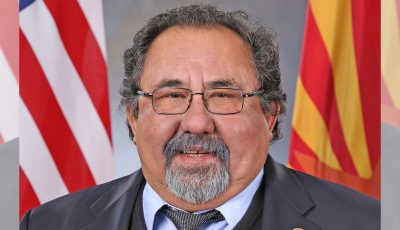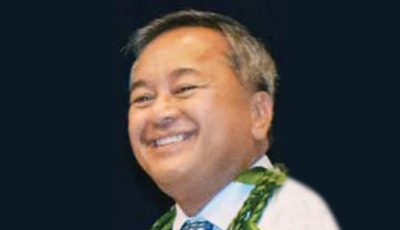GAO: Enrollment delays plague Pacific veterans
Physician recruitment and retention also troubling
Veterans from the Pacific do receive health benefits from the Department of Veterans Affairs healthcare system, but many still fall through the cracks, mostly falling victim to enrolment application delay processing and other errors, according to a new report from the Governmental Accountability Office.
GAO found that many Pacific veterans experience delayed enrollment application processing, contacting for appointment scheduling, and completing comprehensive mental health evaluations.
The report was requested by delegates Gregorio Kilili C. Sablan (Ind-MP), Madeleine Bordallo (D-GU), and Aumua Amata C. Radewagen (R-AS) through U.S. Public Law 114-497, or the Military Construction, Veterans Affairs, and Related Agencies Appropriations Act of 2017.
GAO did not note that the veterans mostly received primary and mental healthcare from the Department of Veterans Affairs Pacific Islands Health Care System, or VAPIHCS, according to the timeliness goals set by the VA Veterans Health Administration, or VHA.
“For the sample of veteran’s medical records that GAO reviewed, VAPIHCS referred nearly all specialty care to non-VA providers within VHA’s timeliness goals, but the time taken to provide care was variable and sometimes lengthy,” the GAO report stated.
Specifically, VAPIHCS sent specialty care referrals to the Veterans Choice Program and the Department of Defense, or DOD, military treatment facilities. GAO noted that based on the records it reviewed, the choice program on average took veterans 75 days before receiving care and 37 days and 47 days for DOD military treatment facilities that VAPIHCS had agreements with.
“GAO found that VAPIHCS did not always manage referrals to the military treatment facility in a timely way and there was inconsistent guidance describing the roles and responsibilities of the VAPIHCS staff involved in the process,” GAO reported, as they said they “identified weaknesses in VAPICHS management of referral process for sending veterans to specialty care services at one of two military treatment facilities.
“These weaknesses may have contributed to the amount of time it took for veterans to receive specialty care services,” GAO said.
Trouble with retention
GAO found in their investigation that VAPIHCS also had trouble recruiting and retaining physicians. GAO reported that, as of October 2017, 17 of about 100 VAPIHCS physician positions were vacant, along with several other types of healthcare providers.
“Some of the challenges VAPIHCS faced are unique to the Pacific Islands, such as the availability of only one local medicine school from which to recruit, along with travel burdens and a high cost of living that may discourage physicians from relocating there,” GAO reported.
Differences in interpretation of hiring and recruiting policies added to other challenges VAPIHCS faces.
GAO reported that VAPIHCS officials said they were implementing strategies, including some adopted from the VHA, in an attempt to retain physicians but with limited success. Such strategies include financial incentives and an educational debt reduction program.
“Although they have described the limits to the success of some of these strategies, they have not evaluated their effectiveness,” GAO reported. “Without completing an evaluation of its strategies, VAPIHCS may not be optimizing its resources to improve its hiring efforts and may continue to struggle with physician shortages.”
GAO recommendations
GAO urged the secretary of VA to ensure that VAPIHCS review its referral process to DOD providers “…including referral cancellation[s] to determine why VHA policy is not being adhered to and make changes as needed.”
The agency added that the VA secretary should ensure that VAPIHCS “clarify guidance to clearly define and document roles and responsibilities for VAPIHCS staff involved in the referral process with Naval Hospital Guam.”
“The Secretary of VA should ensure that VAPIHCS improves the monitoring of referrals and communication with NHG to ensure the timely management of referrals to NHG, including verifying the availability of services for veterans; ensuring referrals are entered into NHG’s electronic medical record system; and obtaining information about the status of scheduling appointments for veterans,” GAO reported as its third recommendation.
For its fourth and final recommendation, GAO said, “The secretary of VA should ensure that VAPIHCS evaluates the effectiveness of strategies it currently uses to promote physician recruitment and retention, including how the strategies could be improved. The plan should also include an assessment of whether additional strategies currently offered by VHA would be beneficial.”

























